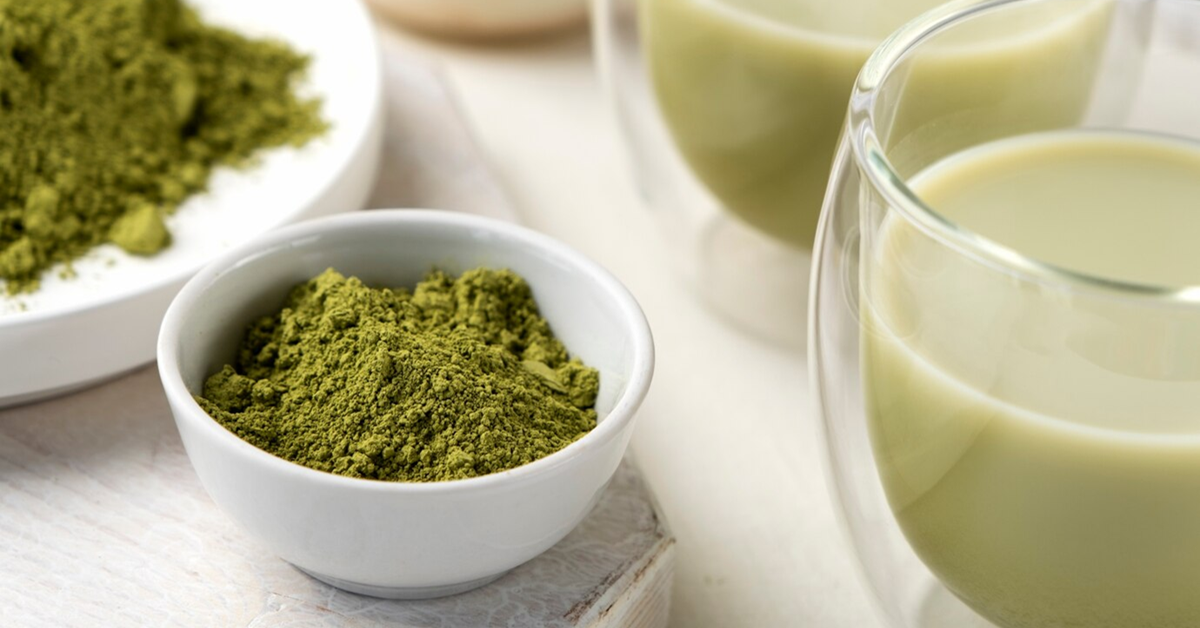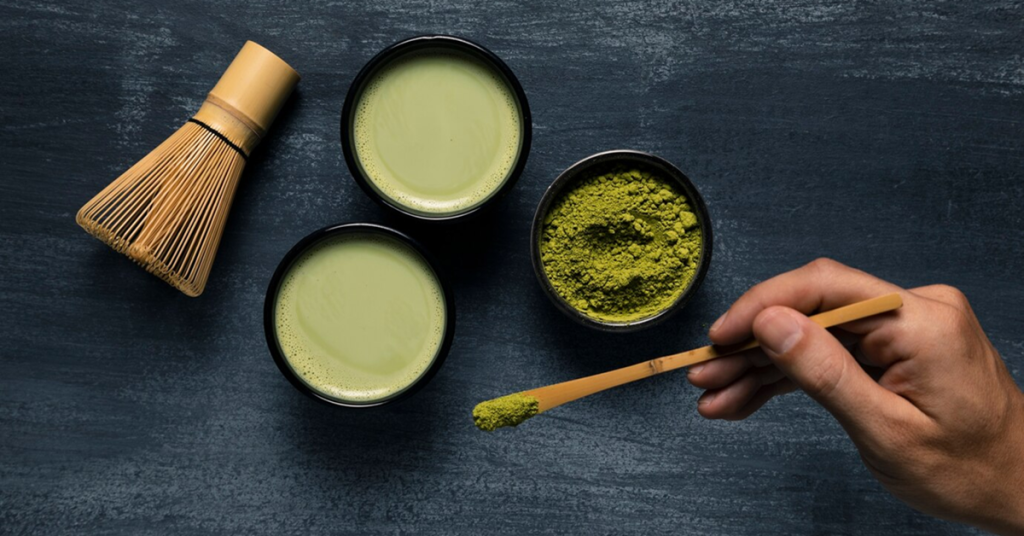-
No products in the cart.
What Is The Difference Between Culinary Matcha And Ceremonial Matcha?

Matcha is a popular alternative to coffee as both contain caffeine. However, many people tend to get confused as the market has different types of matcha. Well, if you’re wondering what is ceremonial matcha and how it differs from culinary matcha, we’re here to clear the air! Explore more about ceremonial and culinary matcha, the differences as well as benefits below:
What Is Matcha?
Matcha is a form of green tea made from powdered tea leaves from Japan. It is traditionally used during Japanese tea ceremonies. Nowadays, matcha is used for various purposes, such as baking and cooking. There are also plenty of beverages made with matcha.
What Is Ceremonial Matcha?
Ceremonial matcha is made with young tea leaves picked during Ichibancha (first tea); the First Harvest season falls from April to May. These tea leaves are known to be the highest grade, as most are young. Thus, ceremonial matcha is only used for Japanese tea ceremonies. The young tea leaves offer a natural sweet taste with high L-theanine content and contain more chlorophyll, providing a greener hue.
What Is Culinary Matcha?
Culinary matcha is typically harvested during the Nibancha (second tea), known as the Second Harvest, which takes place from June to the end of July and Sanbancha (third tea), the Third Harvest season. The tea leaves are referred to as old ones as they are exposed to the sun longer than those used for ceremonial matcha.
Since the tea leaves are old, they contain more antioxidants, offering a bitter taste. Culinary matcha is also lower quality than ceremonial matcha, so it is only used for food and beverage recipes. Those tea leaves exposed to the sun for longer tend to have a richer and bolder flavour. They will also have less chlorophyll and, therefore, tend to lack the vibrant hue of ceremonial matcha.

What Is The Difference Between Ceremonial Matcha And Culinary Matcha?
Although both are somewhat similar, there are several key differences between ceremonial matcha and culinary matcha, which are:
1. Matcha grade
The main difference between ceremonial matcha and culinary matcha is the grade. Ceremonial matcha is the highest grade, and culinary matcha is known to be of lower quality.
2. Caffeine, L-theanine and antioxidant content
Another key difference is that ceremonial matcha has higher caffeine and L-theanine content than culinary matcha. As for the antioxidant catechin content, culinary matcha has slightly higher levels than ceremonial matcha.
3. Flavour
The flavour of ceremonial matcha boasts a smooth taste with natural sweetness due to the higher L-theanine content levels. Culinary matcha offers a more bold taste with bitter notes.
4. Purpose of use
Ceremonial matcha is commonly used in traditional Japanese tea ceremonies, while culinary matcha is used for baking or cooking recipes and making beverages such as smoothies.
5. Cost and availability
Since ceremonial matcha is the highest grade and requires an intensive production process, its cost will be higher than that of culinary matcha. Additionally, ceremonial matcha is used solely for Japanese tea ceremonies. Hence, the price will be higher due to its professional use.
6. Timing of harvest
Ceremonial matcha consists of younger tea leaves than culinary matcha, as it is harvested during the first harvest season. Culinary matcha tea leaves are older as they have been exposed to sunlight for extended periods.
Which Matcha Has The Highest Health Benefits?
The matcha with the highest health benefits would be ceremonial, although the overall nutrition profile is similar to culinary matcha. This is because ceremonial matcha has higher L-theanine and caffeine levels, which help to boost energy and promote calmness. The later harvest grades also contain higher antioxidants and cathechin levels.
What Are The Benefits Of Matcha?
Consuming matcha offers various benefits as it’s packed with many nutrients. Here are some of the main benefits of matcha:
1. Reduce stress levels
If you’re stressed all the time, consuming matcha can be life-changing. L-theanine can be found in ceremonial matcha, which reduces stress or anxiety by boosting dopamine and serotonin levels. The best part about this unique compound is that it promotes relaxation and doesn’t cause drowsiness.
2. Boost concentration and energy
Matcha contains caffeine and L-theanine, which boosts concentration and energy when combined. Both of these are provided when consuming coffee, too, but unlike coffee, matcha doesn’t cause a considerable caffeine crash thanks to L-theanine.
3. Aid in weight loss
Are you trying to lose weight but find it hard to skip your favourite drinks besides water? Matcha is known to be a weight loss weapon. It contains caffeine and catechins, which can increase the rate of calories burned and boost the body’s metabolism.
4. Detox the body
Chlorophyll is a natural detoxifier that helps improve liver function. The chlorophyll found in matcha binds to the toxins within the body and flushes them through the digestive system. Polyphenols, also found in matcha, are antioxidants that help detoxify the body.
5. Enhance the immune system
Matcha contains high levels of antioxidants and vitamin C, which help boost the immune system. Furthermore, EGCG, a type of polyphenol, can be found in matcha and is widely known to improve the immune system.
Conclusion
Whether it is ceremonial matcha or culinary matcha, both offer excellent benefits to one’s health. By understanding what is ceremonial matcha and how it differs from culinary matcha, you can pick the right one for your needs. Plus, when you incorporate matcha into your diet, it will do wonders for your overall health.

